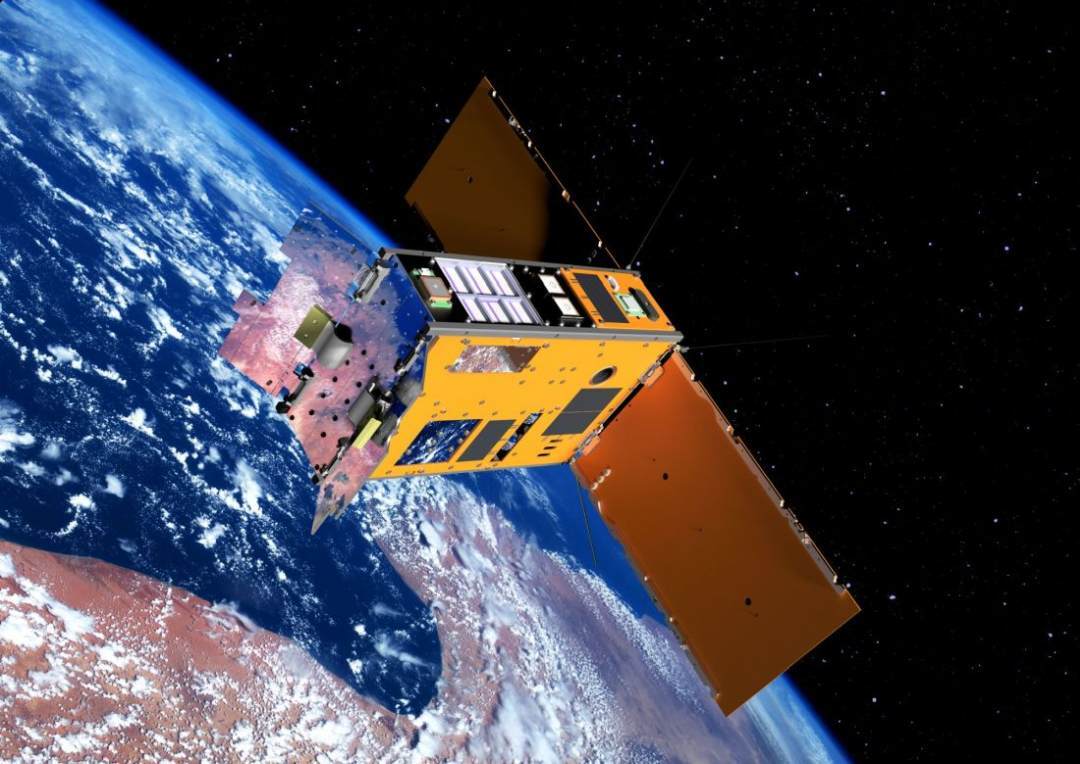The Australian-made SpIRIT nanosatellite is ready for launch.
It has begun the final stage of its preparations after passing compliance testing to verify its ability to survive extreme conditions – such as being riding a rocket booster into space, the extremes of hot-and-cold in orbit, and solar radiation.
It’s the first Australian-made scientific satellite since the FedSat project 21 years ago.
Assembled by Adelaide-based satellite manufacturer Inovor Technologies, the Space Industry Responsive Intelligent Thermal (SpIRIT) device is on its way to Vandenberg Space Force Base in California ahead of its scheduled launch aboard a SpaceX Falcon 9 rocket in November.
The 11.5kg CubeSat is just 30cm square in its folded state. But, once in orbit 550km above the Earth, its solar panels, aerials and thermal radiators will unravel as wide as 1m.
SpIRIT is the result of a consortium project led by the University of Melbourne’s Space Laboratory. https://spirit.research.unimelb.edu.au/Other participants include the Italian Space Agency, and the Italian National Institute of Astrophysics.
They’re providing SpIRIT’s primary payload, the Italian Space Agency’s HERMES X-ray detector which is intended to study some of the universe’s most powerful particles – gamma rays. SpIRIT is one of six international satellites forming the HERMES Scientific Pathfinder Constellation mission.
But the CubeSat is also a testbed of new Australian technology under $7 million in Australian Space Agency grants.
“With new Australian technologies on board, this is an important demonstration of how we can contribute to international space programs,” says Australia’s Space Agency Head, Enrico Palermo.
SpIRIT will carry a tiny metal-powered thruster produced by Adelaide-based Neumann Space in a chassis and computer bus designed and assembled by Inovor.
Sitael Australia was involved in the systems engineering process, while Nova Systems – also situated at Adelaide’s Lot 14 – is involved with the satellite’s ground communications.
The University of Melbourne contributed the thermal control system which is responsible for providing SpIRIT’s sensitive electronics with the precise temperatures needed to operate accurately.
SpIRIT is expected to take up to four months after launch to commission all of its onboard instruments.
“It will take time, but I’m looking forward to receiving images and scientific data back from SpIRIT,” says Mission Principal Investigator, the University of Melbourne’s Professor Michele Trenti. “However, it is already an incredible achievement just to go through the full satellite development cycle.”
After about two years of operation, it is designed to be nudged out of orbit to burn up in the atmosphere to avoid contributing to the growing orbital space junk problem.
“SpIRIT is a testament to Australia’s ability to wholly design, build and test satellites,” says Inovor CEO Matthew Tetlow. “As the Australian space industry continues to ascend, we are not just witnessing history we are actively shaping it.”
Quelle: COSMOS

